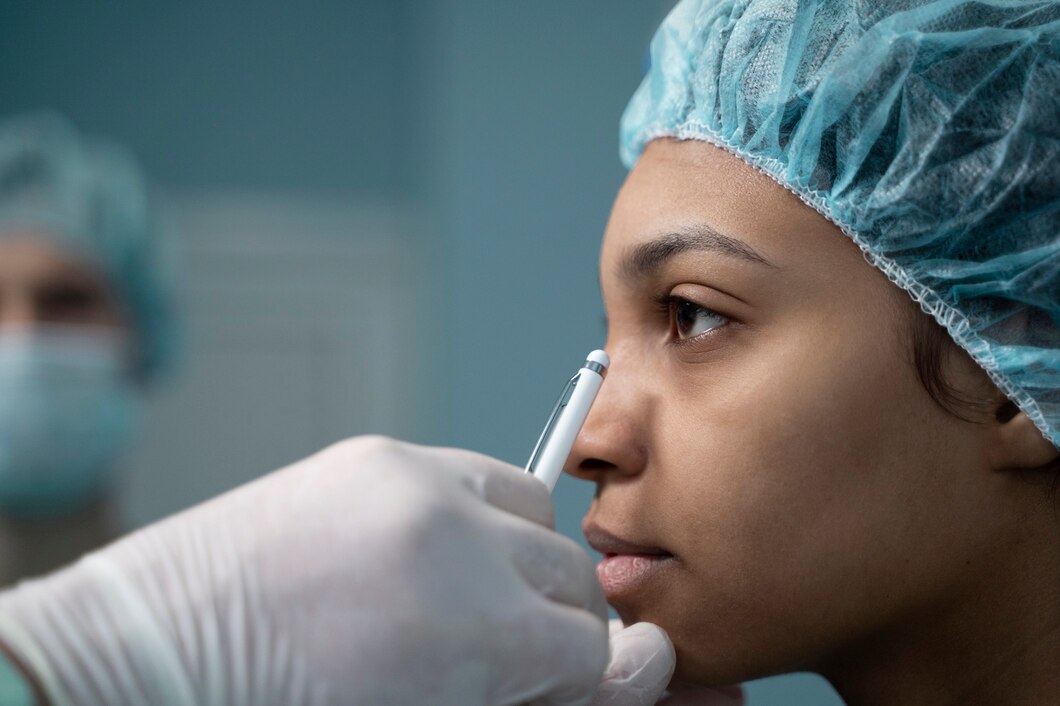Non-surgical nose jobs, often referred to as liquid rhinoplasties, have gained popularity as a less invasive alternative to traditional surgical rhinoplasty. For South African women considering this cosmetic procedure, it’s essential to understand its benefits, risks, and implications. Here are 15 key things you should know about non-surgical nose jobs.
1. What is a Liquid Rhinoplasty?
A liquid rhinoplasty involves the injection of dermal fillers into specific areas of the nose to enhance its shape and contour. This procedure can address issues like bumps, asymmetry, and drooping tips without the need for surgery.
2. Minimally Invasive
One of the main advantages of liquid rhinoplasty is that it is a minimally invasive procedure. It typically requires no general anesthesia and involves minimal downtime compared to traditional rhinoplasty.
3. Quick Procedure
Liquid rhinoplasties are often completed in under an hour. Many women opt for this treatment during their lunch breaks, making it a convenient choice for those with busy schedules.
4. Temporary Results
The results of a liquid rhinoplasty are temporary, lasting between six months to two years, depending on the type of filler used. Regular touch-ups may be necessary to maintain the desired look.
5. Customizable
Since the procedure is performed using fillers, it allows for customization based on individual preferences. The practitioner can adjust the amount and type of filler used to achieve the desired outcome.
6. Safety Considerations
Liquid rhinoplasties are generally considered safe when performed by a qualified and experienced practitioner. However, it’s crucial to research and choose a licensed professional to minimize risks.
7. Possible Side Effects
Common side effects may include swelling, bruising, and redness at the injection site. These effects usually subside within a few days. More serious complications, though rare, can include infection or vascular occlusion.
8. Not Suitable for Everyone
Liquid rhinoplasties may not be suitable for individuals with certain medical conditions, allergies, or those who have had previous nasal surgeries. A thorough consultation with a qualified practitioner is essential.
9. Ideal Candidates
Ideal candidates for a liquid rhinoplasty are those looking to make subtle changes to their nose without the permanence of surgical options. It’s also suitable for those who want to correct minor imperfections.
10. Consultation is Key
Before undergoing the procedure, a consultation with a qualified practitioner is essential. This meeting allows for an assessment of your goals, medical history, and whether you are a suitable candidate.
11. Understanding the Fillers
Most liquid rhinoplasties use hyaluronic acid-based fillers, which are well-known for their safety and reversibility. If desired, these fillers can be dissolved using an enzyme called hyaluronidase.
12. Cost Considerations
The cost of a liquid rhinoplasty in South Africa varies based on the practitioner, location, and type of filler used. It’s essential to understand the financial implications and choose a reputable provider.
13. Cultural Perspectives
In South Africa, beauty standards can vary greatly among different cultures. Non-surgical nose jobs provide a flexible option for women to enhance their features while respecting their unique backgrounds.
14. Post-Procedure Care
Following the procedure, it’s important to follow aftercare instructions provided by the practitioner. This may include avoiding strenuous activities and keeping the head elevated to reduce swelling.
15. Long-Term Implications
While liquid rhinoplasties are temporary, it’s essential to consider how often you want to maintain your results. Over time, repeated injections can lead to changes in the skin or tissue, so having open discussions with your practitioner about long-term goals is crucial.
Non-surgical nose jobs, or liquid rhinoplasties, offer a less invasive way for South African women to enhance their facial features. With proper research, consultation, and understanding of the procedure, women can make informed decisions that align with their beauty goals. As with any cosmetic treatment, prioritizing safety and choosing a qualified practitioner will ensure the best possible outcomes.








